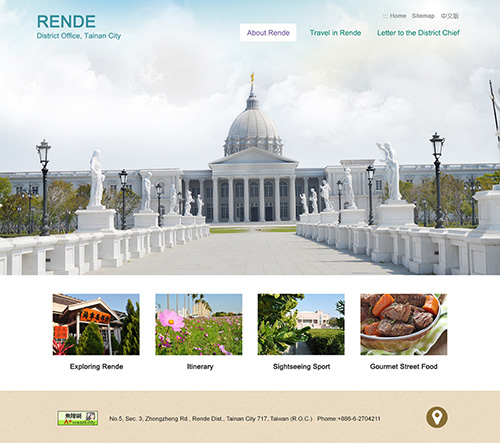Exploring Rende
Rende was developed from "Tuku Village". In indigenous language, "tuku" means "containers for storing grains in rural areas". Before the county-city merger, Rende was a township under Xinfeng District, which was inhabited by the Siraya people, a tribe of Taiwanese Plains Aborigines, long before Dutch colonization. According to related literature, what is today's Cheluqian may have been a CBD in the Dutch colonial period. During the Kingdom of Tungning, Zhangxing, Rende, Wenxian, Renhe, and Yiren villages were established here under Wannian County. The Japanese changed its name from "Tuku" to "Rende Village" in 1920. After the end of WWII, it was restructured as a township. After Tainan became a municipality on December 25, 2010, it was renamed as Rende District.
Special geographical names including Cheluqian and Ercenghang are retained. The former is located in Baoan Village today. It was named according to the sugar railway built in the Japanese colonial period. Rende Sugar Refinery located next to the Baoan Railway Station was Cheluqian Sugar Refinery in that time. As for Ercenghang, it was named for its location by the Ercenghang River. As most sugar produced in that time was centralized here before forwarding to Anping Harbor for exporting to China, it became synonymous with Taiwan sugar. A local saying reads, "The thirteen refineries in Suzhou and Hangzhou were not as good as Taiwan's Ercenghang Refinery," and it is not hard to imagine the thriving scene in that time. Today, light industry is the major local industry and agriculture is a minor one. There are textile, garment, IT, plastics, machinery, and food processing everywhere in the district.
